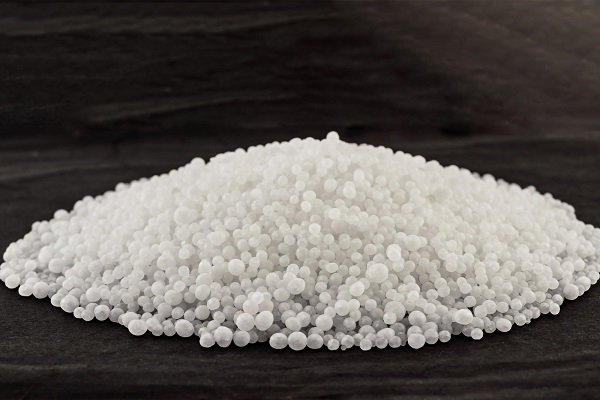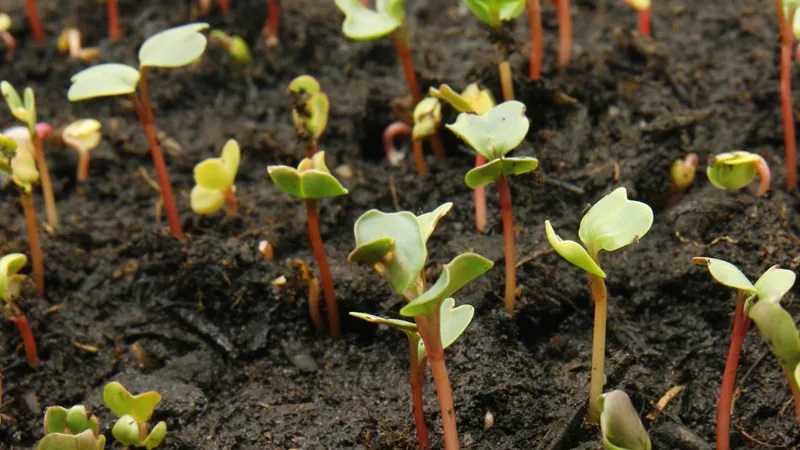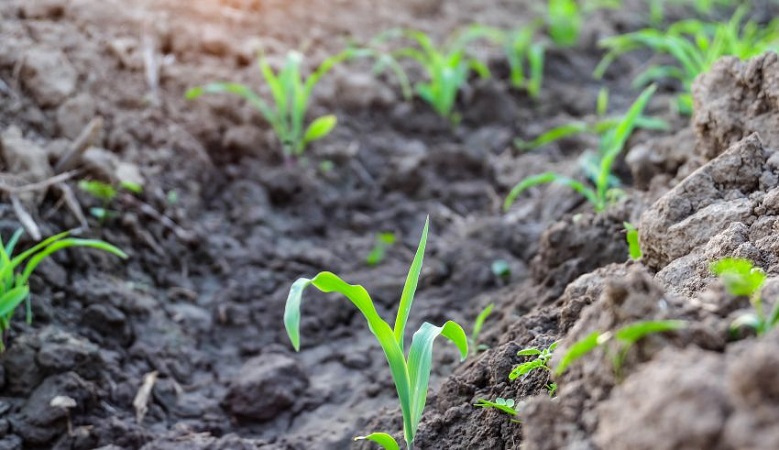
Side Effects of Using Urea Fertilizer: Avoid It in These Situations!
Urea fertilizer can be effective when used correctly and at the right time. However, improper use, overuse, or application in unsuitable conditions won’t just fail to improve crop performance; it can actually harm the plants, soil, and environment. In this article, we’ll explore the side effects of urea fertilizer and explain when it’s strictly off-limits. Stick with us.
Introduction to Urea Fertilizer and How It Works
Urea is one type of nitrogen-based fertilizer, containing 46% nitrogen. It’s an economical and affordable option for farmers. Urea promotes faster growth in agricultural crops, but if used incorrectly or excessively, it can backfire.
Here’s how urea works in the soil: Enzymes in the soil first convert urea into ammonia. Then, the ammonia reacts with water to form ammonium. Finally, microorganisms in the soil transform the ammonium into nitrate.
For nitrate to be released, soil temperature and moisture need to be ideal. If the soil is too cold or lacks moisture, the release process slows down or gets disrupted. To maximize urea’s effectiveness, it’s best to mix it thoroughly with the soil. This can be done by tilling the soil after application or through heavy irrigation afterward.
Let’s take a quick look at the benefits of urea fertilizer:
- Urea is one of the cheapest nitrogen fertilizers.
- It has a high nitrogen content (46%).
- It’s easy to store.
- It’s readily available.

What Are the Side Effects of Overusing Urea Fertilizer?
Many farmers mistakenly think “more is better,” but excess nitrogen in the soil can create an unbalanced environment and negatively impact plants. Overusing urea doesn’t help the plants—in fact, it leads to these problems:
- Increased soil salinity
- Leaf burn
- Uneven growth of above-ground parts compared to roots
- Stunted growth
- Reduced germination, fruiting, or lower fruit quality
- Interference with the absorption of other nutrients (like potassium and phosphorus)
- Destruction of beneficial soil microorganisms
- Increased vulnerability to diseases
- Eutrophication (algae blooms and reduced water oxygen) if urea washes into water sources
When Should You Avoid Using Urea Fertilizer?
Urea has a few notable drawbacks:
- Nitrogen in urea can evaporate before it’s absorbed. At high temperatures, nitrogen turns into ammonia and evaporates.
- Improper use wastes resources and reduces profitability.
- Overuse of urea increases soil pH and salinity.
Given these issues, urea fertilizer is not recommended in these conditions:
High Temperatures or Intense Sunlight
In hot weather or under strong sunlight, nitrogen evaporation from the soil increases. This wastes the nitrogen in urea, reducing its effectiveness. Plus, heat can damage roots and cause burns. It’s better to use fertilizers with special formulations in these conditions or cover the urea well in the soil to prevent evaporation.
Alkaline Soil Without Proper Management
In alkaline soils, the nitrogen in urea quickly converts to ammonium. This can release ammonia into the soil, harming plants and causing root burn. To avoid this, proper pH management and suitable fertilizers are essential.
Before Heavy Rainfall
If heavy rain is expected, urea will wash away. The nitrogen in the soil gets lost quickly and isn’t utilized. That’s why it’s best to delay urea application until the weather is more favorable.
Young Plants or Newly Planted Seedlings
Young plants and freshly planted seedlings are sensitive to released ammonia. Using urea at this stage can burn roots and damage the plants. Opt for milder fertilizers like ammonium sulfate instead during early growth phases.

During Flowering or Fruit Ripening
Urea isn’t recommended during flowering or fruit ripening (especially for crops like tomatoes and strawberries). Excess nitrogen promotes excessive foliage growth, which reduces fruit quality. Use fertilizers with a more balanced nitrogen ratio at these times.
With Chloride-Based Fertilizers or High-pH Materials
Combining urea with chloride fertilizers or high-pH substances increases the risk of ammonia burn. These mixes can release ammonia uncontrollably, damaging plants. Avoid these combinations and choose other fertilizers that support plant health if needed.
High Humidity and Saturated Soils
In overly wet soils, urea raises the risk of nitrogen leaching and creates anaerobic conditions. This can harm roots and reduce nutrient uptake. Skip urea in these situations and use alternative methods to supply nitrogen.
By following these tips and considering environmental conditions and plant type, you can prevent the side effects of improper urea fertilizer use and improve your crop yield and quality.
Why Avoid Urea in Saline Soils?
Using urea fertilizer in saline soils can cause serious issues for plants and soil:
- Increased salt concentration in the soil: When urea is added to saline soil, its nitrogen converts to ammonium and then nitrate, which can raise the level of soluble salts.
- Ammonia toxicity: In saline soils, urea’s nitrogen turns into ammonia, which can be toxic to plants at high levels, leading to root burn and reduced growth. This is especially problematic in saline soils where water and nutrients are already limited.
- Nutrient imbalance: Urea disrupts nutrient balance in saline soils. Excess salts can interfere with the uptake of nutrients like potassium and calcium, causing deficiencies in plants.
- Reduced fertilizer efficiency: In saline soil, urea’s nitrogen isn’t absorbed properly, slashing its effectiveness. This wastes resources and hikes production costs.
- Worsened stress conditions: Plants in saline soils are already stressed, and urea can make it worse. It puts extra physiological and metabolic pressure on plants, hindering their growth.
For these reasons, it’s better to use more suitable fertilizers in saline soils that support plant health.
Effective Alternatives to Urea Fertilizer
In alkaline and saline soils, urea can cause leaf burn and crop damage. There are good alternatives that supply nitrogen without the side effects of urea fertilizer. These include ammonium sulfate, NPK fertilizers, ammonium nitrate fertilizer, and organic options like vermicompost and poultry manure. Choosing these can improve plant nutrition and avoid issues from improper urea use.

Ammonium Sulfate: An Effective Alternative to Urea in Alkaline Fields and Saline Soils
We’ve previously covered the differences between urea and ammonium sulfate in another article. As a source of nitrogen and sulfur, ammonium sulfate performs better than urea in specific conditions like alkaline fields and saline soils.
Here’s how ammonium sulfate works:
- Lowers soil pH: High pH can block effective nitrogen and nutrient absorption by plants. Ammonium sulfate brings pH closer to optimal levels, improving nutrient uptake and plant health.
- Supplies nitrogen and sulfur simultaneously: Ammonium sulfate contains sulfur in addition to nitrogen, which is essential for many plants and aids their growth and development. When plants need both, it boosts fertilizer efficiency and plant growth.
- Reduces ammonia burn risk: In saline soils, urea’s nitrogen easily becomes toxic ammonia. But ammonium sulfate’s acidic properties lower this risk, making nitrogen available in a safer form.
- Improves soil structure: Ammonium sulfate helps enhance soil structure and prevents issues like salinity and anaerobism. This increases microbial activity and soil quality.
- Boosts fertilizer efficiency: Compared to urea, ammonium sulfate improves nitrogen efficiency because it’s directly available to plants without needing bacterial conversion.
Given these benefits, ammonium sulfate serves as an effective alternative to urea in alkaline and saline soils, helping improve plant growth and performance.
Best Times to Use Urea Fertilizer (To Prevent Side Effects)
To avoid side effects, apply urea fertilizer in these situations:
- Use it in the early morning or evening hours. Avoid applying it at midday.
- Always follow up with light irrigation after application to aid fertilizer absorption in time and prevent evaporation.
- Cover the urea with soil (if applying manually).
- Split applications into multiple doses instead of one large one for better results.
- Use soil tests and consult plant nutrition experts.
Methods for Slow-Release Urea Fertilizer
Urea can be made available to plants more slowly through certain methods. One way is coating urea with materials like sulfur, which slows nitrogen release. This allows plants to use the nitrogen more effectively, leading to better growth.
Additionally, using potassium, phosphorus, and humic acid fertilizers under expert guidance can reduce urea leaching in the soil and increase plant uptake. These combinations improve soil structure and meet plant nutritional needs, resulting in healthier, more optimal growth. Adopting these methods helps farmers and gardeners make the most of their resources and enhance crop performance.